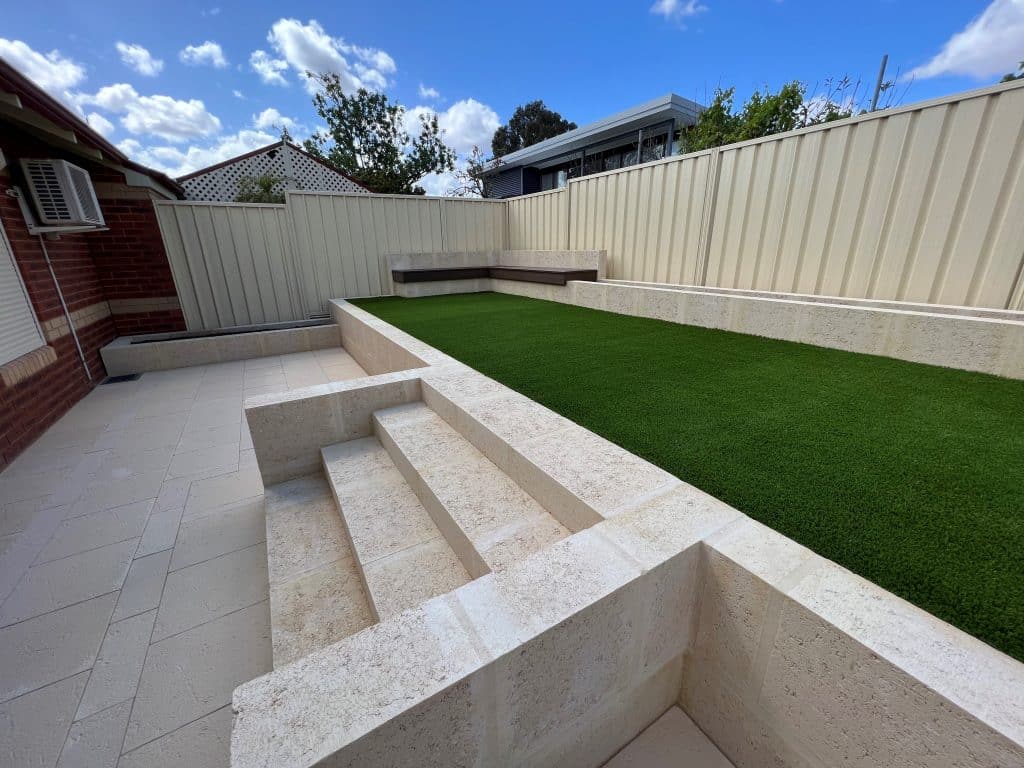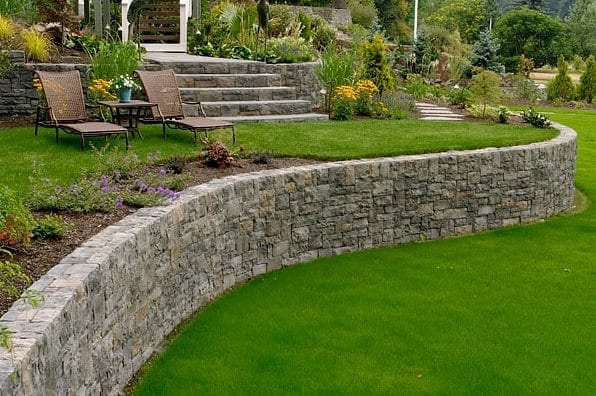Enhancing Residential Or Commercial Property Security: The Duty of Retaining Walls in Dirt Retention and Erosion Control
In the realm of building monitoring, keeping stability and stopping disintegration are critical issues for homeowner and developers alike. Maintaining wall surfaces stand as quiet guardians, playing an important function in dirt retention and erosion control. Their value prolongs beyond plain architectural support, influencing the overall stability and long life of a property. By discovering the nuances of different types, design considerations, building and construction methods, and upkeep suggestions related to keeping walls, a much deeper understanding of their pivotal function in enhancing residential property stability emerges. The intricate dance between design expertise and ecological consistency reveals an engaging narrative that underscores the vital nature of preserving walls in modern-day land management.
Importance of Retaining Walls in Security
Retaining wall surfaces play a crucial role in holding back dirt, stopping disintegration, and producing level surface areas in sloped locations. By providing structural support, preserving walls aid to rearrange lateral pressure triggered by soil, protecting against landslides and slippage.
Keeping wall surfaces are specifically important in hilly or uneven surfaces where dirt disintegration is a common incident. Without sufficient support, soil erosion can lead to the destruction of landscapes, jeopardizing the stability of structures and posturing risks to occupants. Preserving walls function as obstacles, maintaining the soil and preventing it from changing downhill during hefty rainfall or various other environmental stressors.
In addition, retaining wall surfaces use long-lasting benefits by lowering upkeep expenses connected with dirt erosion and land instability. By buying properly designed retaining wall surfaces, property owners can make sure the long life and sustainability of their landscapes while promoting a safe and visually enticing setting.

Kinds Of Retaining Walls for Erosion Control
Generally utilized in landscaping and civil design projects, various types of retaining walls act as effective options for erosion control in varied terrain problems. Gravity preserving wall surfaces are tough frameworks that count on their weight to resist the stress of the dirt behind them. They appropriate for reduced to medium height applications and are commonly made from concrete or rock. Cantilever maintaining walls, on the other hand, are designed with a thicker base and use a lever arm to hold up against the dirt stress. These walls are generally made use of in areas where space is limited.
For taller wall surfaces or where area is a constraint, anchored maintaining walls are commonly employed. When picking the ideal kind of retaining wall for erosion control, variables such as soil structure, wall surface elevation, and website conditions must be very carefully taken into consideration to make certain durable security and efficiency.
Style Considerations for Dirt Retention
Integrating the principles of structural engineering and environmental sustainability is necessary when taking into consideration style facets for effective dirt retention remedies. When designing for dirt retention, it is vital to assess the details needs of the site, consisting of soil make-up, water drain patterns, and slope security. The height and location of the preserving wall surface are crucial factors that affect the general layout. Designers must additionally consider the pressure put in by the retained soil and potential side tons to guarantee the framework's stability gradually.
Moreover, the material choice for the keeping wall surface is essential in improving durability and capability. Concrete, wood, gabion baskets, and all-natural rock are common products used in keeping wall construction, each with its unique advantages and considerations. Appropriate drain devices, such as weep openings and French drains, should be integrated right into the design to stop water accumulation behind the wall, which can bring about architectural failure and erosion.
Construction Methods for Maintaining Walls
When executing style considerations for effective dirt retention, the building and construction methods for preserving wall surfaces play a critical duty in ensuring structural stability and lasting stability. One usual technique is the gravity wall surface, which depends on the weight and mass of the wall itself to resist the stress of the preserved soil.
An additional commonly utilized construction method is the cantilevered wall surface, which makes use of a concrete piece foundation that expands backwards right into the kept dirt. This design gives added stability and is ideal for tool to high preserving walls. For taller frameworks, strengthened dirt techniques such as making use of geogrids or soil nails can be employed to enhance the wall surface's toughness click this and security.

Maintenance Tips for Residential Property Stability
To make sure long-term residential property security, regular maintenance practices are vital for preserving the stability of stopping and maintaining walls disintegration problems. Cleansing the surface area of the preserving walls can also help keep their structural stability by eliminating dirt, particles, and plant life that could weaken the wall surface over time.
Along with aesthetic evaluations and cleansing, it is important to check the drain systems connected with the retaining walls. Guaranteeing that drains pipes are free from blockages and functioning correctly can stop water accumulation behind the walls, which can bring about pressure and potential failing. Effectively operating water drainage systems are important for taking care of water circulation and reducing the threat of erosion.
Routinely checking and preserving maintaining walls according to these tips can prolong their lifespan and add to the overall stability of the residential property.
Verdict
In conclusion, retaining walls play a vital duty in enhancing residential or commercial property security by avoiding soil disintegration and preserving soil in place. Routine upkeep of maintaining wall surfaces is necessary to make certain long-lasting stability and security versus disintegration.
For taller wall surfaces or where space is a restraint, anchored preserving wall surfaces are frequently utilized. These wall surfaces make use of cable televisions or strips that are secured into the soil or rock behind the wall to offer added support. When picking the suitable type of keeping wall for erosion control, factors such as dirt make-up, wall height, and website visit this site problems need to be thoroughly thought about to ensure lasting security and effectiveness.
One usual method is the gravity wall surface, which counts on the weight and mass of the wall surface itself to withstand the pressure of the preserved dirt. Cleaning up the surface area of the maintaining wall surfaces can also aid preserve their architectural stability by removing dirt, particles, and plant life that might deteriorate the wall over time.